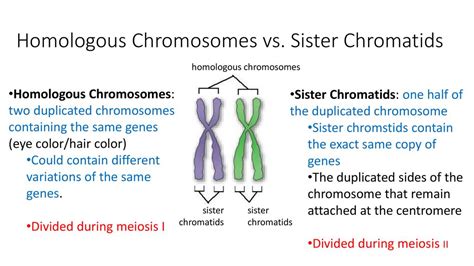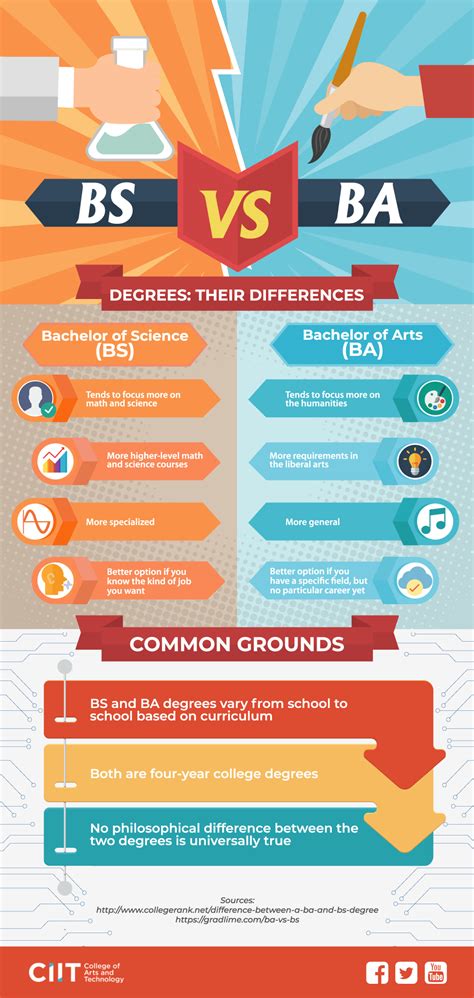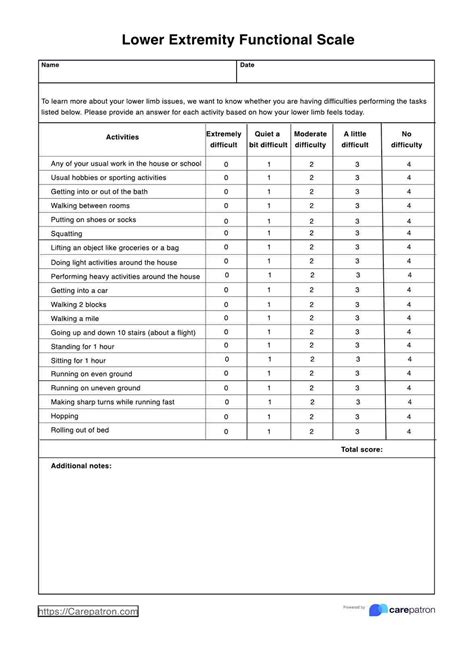When it comes to understanding the intricacies of genetics and cell division, two terms that are often discussed are homologous chromosomes and sister chromatids. While these concepts are related to the process of cell division, they represent distinct aspects of chromosome structure and function. In this article, we will delve into the definitions, differences, and significance of homologous chromosomes and sister chromatids, providing a comprehensive overview for those seeking to grasp the fundamental principles of genetics.
Key Points
- Homologous chromosomes are pairs of chromosomes that carry the same genes in the same order but are derived from different parents.
- Sister chromatids are identical copies of DNA that are formed during cell division and are joined at the centromere.
- The distinction between homologous chromosomes and sister chromatids is crucial for understanding genetic inheritance and the mechanisms of cell division.
- Homologous chromosomes undergo crossing over during meiosis, increasing genetic diversity, whereas sister chromatids do not undergo such recombination.
- Understanding the role of homologous chromosomes and sister chromatids is essential for appreciating the complexity of genetic disorders and the development of therapeutic strategies.
Introduction to Homologous Chromosomes

Homologous chromosomes are pairs of chromosomes that are similar in shape, size, and genetic content. They carry the same genes in the same order but are derived from different parents. For example, in humans, one member of each homologous pair comes from the mother, and the other comes from the father. This pairing is crucial for genetic inheritance, as it allows for the mixing of genetic material during meiosis, the process by which gametes (sperm and egg cells) are produced. Homologous chromosomes are also known as homologs or homologous pairs.
Formation and Role of Homologous Chromosomes
During meiosis, homologous chromosomes come together and exchange genetic material through a process called crossing over. This exchange increases genetic diversity by creating new combinations of genes that were not present in the parental chromosomes. After crossing over, the homologous chromosomes separate, and each gamete receives one chromosome from each pair. This random assortment of chromosomes contributes to the genetic diversity of offspring.
Understanding Sister Chromatids

Sister chromatids, on the other hand, are identical copies of DNA that are formed during the replication process of cell division. They are joined at the centromere, a specialized region on the chromosome that links sister chromatids together. Sister chromatids are genetically identical because they are produced from the same DNA molecule during the S phase of the cell cycle. The main difference between sister chromatids and homologous chromosomes is their genetic identity and the phase of the cell cycle during which they are relevant.
Difference Between Sister Chromatids and Homologous Chromosomes
A key distinction between sister chromatids and homologous chromosomes lies in their genetic composition and the stage of cell division at which they are formed. Sister chromatids are identical and are formed during mitosis or meiosis II, after the replication of DNA, whereas homologous chromosomes are formed during meiosis I and contain a mix of maternal and paternal genetic material. Furthermore, sister chromatids do not undergo crossing over, as they are genetically identical and represent the replicated form of a single chromosome.
| Characteristics | Homologous Chromosomes | Sister Chromatids |
|---|---|---|
| Genetic Composition | Similar but not identical, derived from different parents | Genetically identical, formed from the same DNA molecule |
| Formation | During meiosis I | During the S phase of the cell cycle, before mitosis or meiosis II |
| Role in Cell Division | Undergo crossing over, increasing genetic diversity | Do not undergo crossing over, ensure genetic continuity |
| Separation | Separate during meiosis I | Separate during mitosis or meiosis II |

Implications of Homologous Chromosomes and Sister Chromatids in Genetics
The understanding of homologous chromosomes and sister chromatids has significant implications for genetics and medicine. The concept of homologous chromosomes explains how genetic traits are inherited and how genetic disorders can be passed down through generations. The process of crossing over between homologous chromosomes also contributes to the genetic diversity of a species, which is essential for adaptation and evolution.
Genetic Disorders and Therapeutic Strategies
Genetic disorders often result from abnormalities in chromosome structure or number. Understanding the role of homologous chromosomes and sister chromatids can help in the development of diagnostic tools and therapeutic strategies for such disorders. For example, Down syndrome is caused by an extra copy of chromosome 21, which can result from errors during meiosis, highlighting the importance of proper chromosome segregation.
What is the primary difference between homologous chromosomes and sister chromatids?
+The primary difference lies in their genetic composition and the stage of cell division at which they are formed. Homologous chromosomes are similar but not identical, derived from different parents, whereas sister chromatids are genetically identical, formed from the same DNA molecule.
Why is the concept of homologous chromosomes important for understanding genetic inheritance?
+Homologous chromosomes are crucial for genetic inheritance because they allow for the mixing of genetic material during meiosis, increasing genetic diversity and ensuring that offspring are not identical to their parents.
How do sister chromatids contribute to genetic continuity?
+Sister chromatids ensure genetic continuity by providing an exact copy of the genetic material to the daughter cells during mitosis or meiosis II, maintaining the integrity of the genome from one generation of cells to the next.
In conclusion, the distinction between homologous chromosomes and sister chromatids is a fundamental concept in genetics, underpinning our understanding of genetic inheritance, cell division, and the mechanisms that contribute to genetic diversity. By grasping these concepts, we can better appreciate the complexity and beauty of life, as well as the challenges and opportunities presented by genetic disorders and the development of therapeutic strategies.



